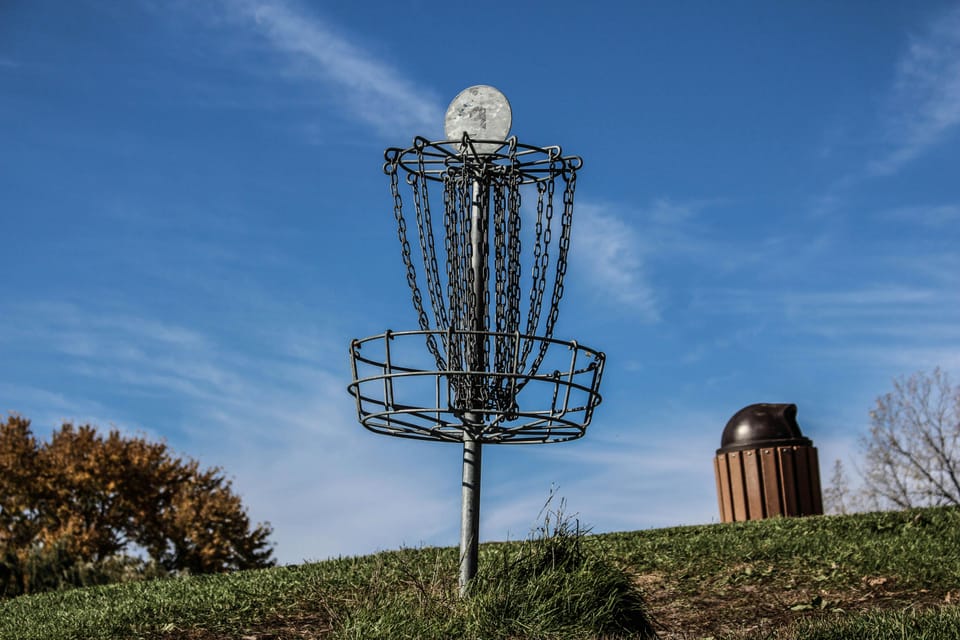Golf vs. Disc Golf: A Tale of Two Fairways

If you've ever walked through a park and seen someone flinging a plastic disc toward a metal basket, you've witnessed disc golf in action. And if you’ve ever watched someone tee off on a lush, manicured course, navigating bunkers and water hazards to reach a small hole in the ground, you’ve seen traditional golf. While these two sports share a name and some core principles, they are distinct in playstyle, culture, equipment, and accessibility. Here’s a deeper dive into what sets them apart—and what binds them.
1. Core Concept: Target-Based Precision
At their heart, both golf and disc golf are target sports. The objective is simple: start from a designated area (the tee), reach the target (a hole in golf or a metal basket in disc golf), and do so in as few throws or strokes as possible. Each “hole” has a designated par, and scoring follows the same structure—birdies, bogeys, eagles, and so on. This shared format creates a similar rhythm and pacing, which is likely why they draw mutual respect from fans and players alike.
2. Equipment and Gear
Golf requires a set of clubs—usually up to 14—each designed for specific types of shots, from powerful drives to delicate chips. Players also use golf balls, tees, gloves, and sometimes carts or caddies. Clubs are expensive, and the skill to wield each effectively takes years to master.
Disc golf, on the other hand, uses a selection of discs: drivers, mid-range, and putters. Each disc type serves a similar purpose to a golf club, with drivers flying fast and far, mid-ranges offering more control, and putters designed for short, precise throws. Disc golf discs are much cheaper than golf clubs, and a beginner can start with just one or two.
3. Course Layout and Terrain
Golf courses span acres of groomed land, with fairways, greens, bunkers, water hazards, and roughs. They're often part of private clubs or expensive public facilities, and maintaining them is labor-intensive and costly.
Disc golf courses are more rustic. They often run through wooded parks, open fields, or mixed terrain. Natural obstacles like trees, bushes, and elevation changes act as hazards. Many courses are free to play and publicly accessible, making them far more inviting for spontaneous or casual play.
4. Physical Demands and Skillset
Golf emphasizes controlled power, rhythm, and technique. A powerful drive, a soft wedge shot, or a tricky putt each demand different skills. Mental resilience plays a big role, too—especially over 18 holes.
Disc golf also requires finesse and focus, but the physical motion is different. Players use a variety of throwing techniques—forehand, backhand, overhead—to navigate courses. Flexibility, balance, and an understanding of aerodynamics are critical, especially in wind. It's also more physically demanding in terms of walking trails and wooded areas without carts.
5. Culture and Community
Golf has long carried an air of tradition and formality. Dress codes, etiquette, and course rules reflect its origins among aristocrats in Scotland. Though more accessible today, it still has a reputation for exclusivity.
Disc golf, in contrast, grew out of counterculture movements in the 1960s and 70s. Its community is often described as laid-back, inclusive, and grassroots. Local clubs host weekly leagues, charity events, and casual tournaments that focus more on camaraderie than competition.
That said, both sports have professional tours, with televised events and elite-level athletes. The Professional Golfers' Association (PGA) and the Professional Disc Golf Association (PDGA) are their respective governing bodies, each growing its sport in different but increasingly overlapping ways.
6. Cost and Accessibility
One of the biggest dividing lines between the two sports is cost. Golf is famously expensive. Green fees, equipment, lessons, and club memberships add up quickly.
Disc golf offers a far more affordable entry point. Many courses are free, and a starter disc set can cost less than a single golf lesson. This low barrier has helped the sport spread rapidly—especially among younger players and urban communities.
7. Which One Is for You?
If you enjoy the challenge of mastering precision tools, appreciate tradition, and don’t mind a steeper cost of entry, golfmight be your game. If you’re more spontaneous, like hiking trails, and want an accessible way to test your skill in nature, disc golf is a strong contender.
Both sports reward practice, strategy, and mental focus. They can be played solo or with friends, competitively or just for fun. And both offer that universal thrill—the satisfaction of a well-placed shot.
In the end, golf and disc golf aren’t rivals—they’re siblings. Each offers a unique way to engage with the outdoors, challenge yourself, and maybe even find a bit of peace in the process.
